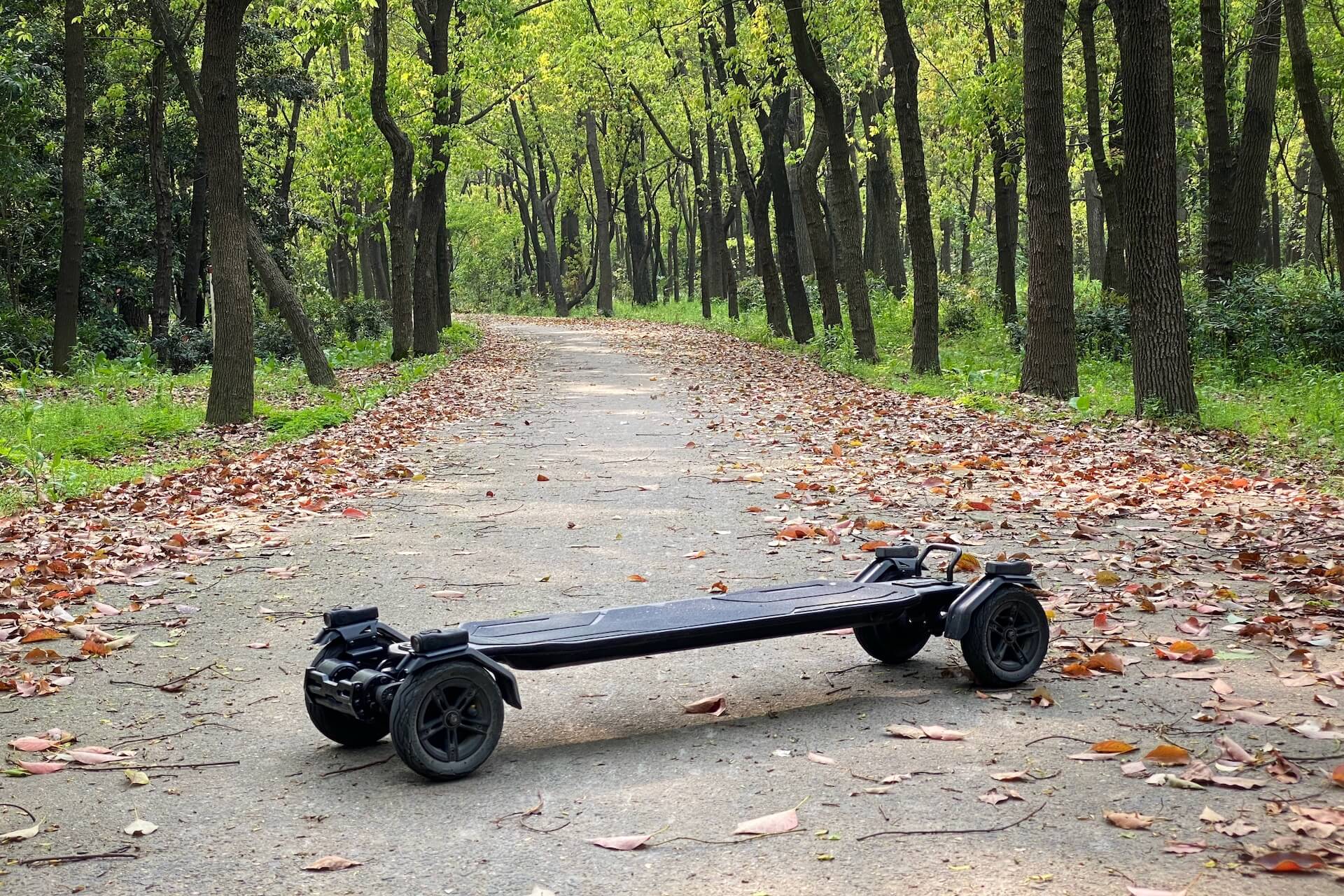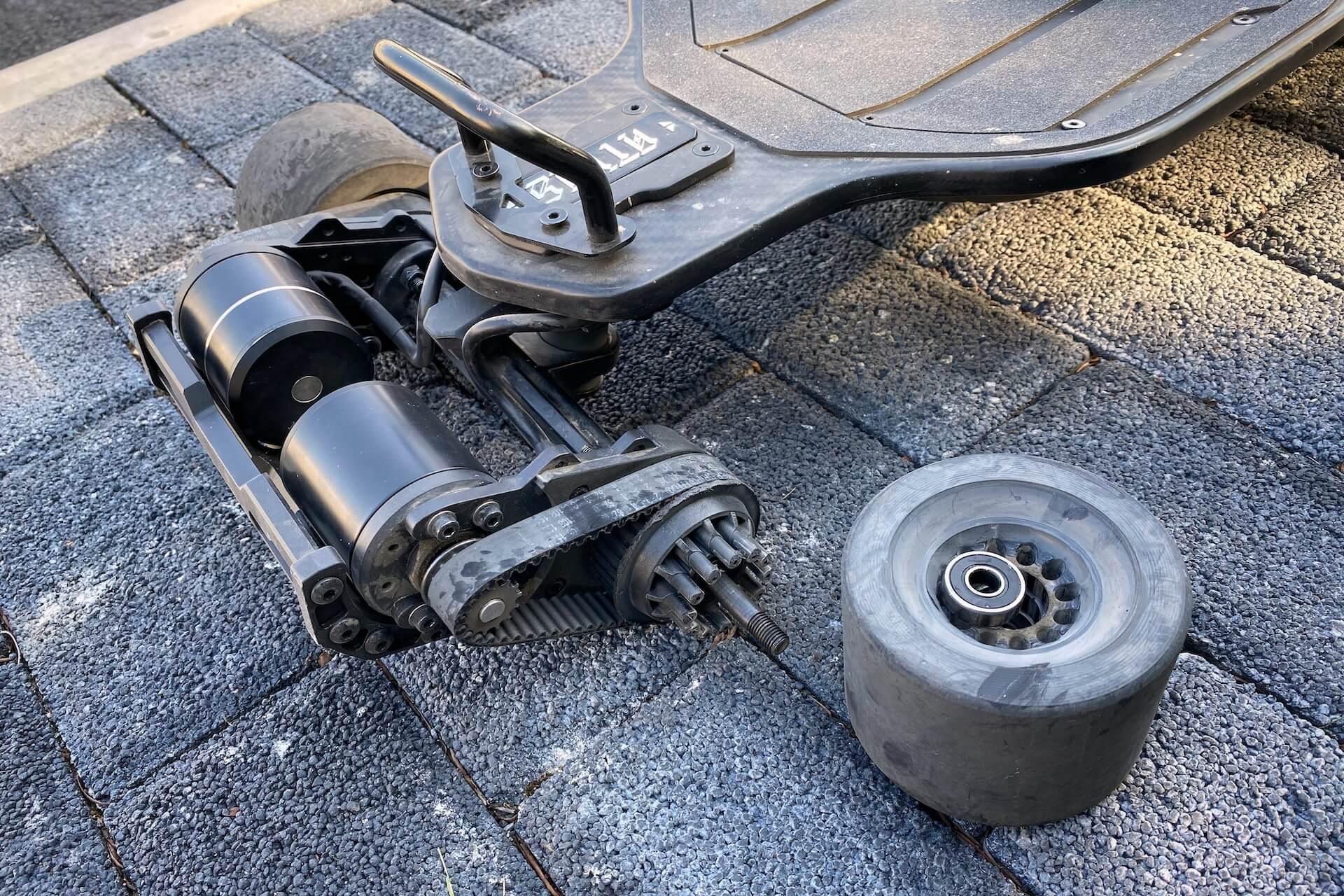Category: Reviews
-
WowGo Mini 2 Review
in ReviewsWowGo has really stepped up their brand image this past year. The Mini 2 is in my opinion not just the most attractive board that WowGo has released so far, but one of the best looking short electric skateboards available today. Let’s start off this review with the skate parts. Skate parts The deck on…
-
Propel Endeavor Pro Review
in ReviewsThe Propel Endeavor series of electric skateboards is vastly different from all of the other boards I’ve covered on my channel so far. It is so different that there are a few important things you need to know to decide if this board is right for you. What are its strengths? What are its flaws?…
-
Meepo Hurricane Review
in ReviewsIn my last video, I told you why I feel the Meepo Hurricane is a landmark product for Meepo Board and how it out-specs many of its competitors, such as the Evolve Hadean. Now let’s get into the detailed review. Electronics Like I said in the previous video, the Meepo Hurricane uses a 12S4P 726Wh…
-
Insta360 One X2, One R, Go 2 Reviews
in ReviewsInsta360 is having a sale at the moment (Aug 25 to Sep 6) so now’s a good time to share my thoughts about their cameras and hopefully help you decide which one(s) to get or not get. If you don’t know me, I make a bunch of videos about electric skateboards and frequently use Insta360…
-
Exway X1 Max Review
in ReviewsBelow is a transcript of my video review of the Exway X1 Max electric skateboard. In a world where e-skaters want more range, more speed, more flex, more thrust, more girth, more gimmicks, Exway dares to release a board that’s more of the same – but better. What’s different about the X1 Max compared to…
-
B-One Carbon Hercules Hidden Mode
in ReviewsThe B-One Carbon Hercules has a hidden speed mode that I didn’t mention in the review. But before I get to that, I need to correct a mistake: In the video I got confused about the ESC’s max current and said that it’s 50A. While the ESC hardware is rated for 50A, the ESC program…
-
WowGo 2S Pro Review
in ReviewsWatch the video for my review of the budget-friendly WowGo 2S Pro electric skateboard. I’m just sharing additional info regarding the range test in this post. I did the test at night because lately the temperature outside has been too hot and muggy during the day (like 30+ ºC, humidity 90%). And because I did…
-
Onsra Black Carve 2 Review
in ReviewsLet’s just jump into it! Deck The deck is about 100cm long, which is 6cm longer than the original Onsra Black Carve. Compared to other boards in the same category, it’s one of the longer ones. The amount of room to stand felt comfortable for me (182 cm). The shape of the concave is quite…
-
Onsra Challenger Review
in ReviewsI have the direct drive version of the Onsra Challenger. I have a lot to say about it. Let’s begin with the deck. Deck This deck is 90cm long and – I’ll measure the width and update later. Feels pretty wide. Since it’s a deck with a kicktail and without wheel cutouts, the entire top…
-
Exway Atlas Review
in ReviewsThe Exway Atlas Carbon gives us a peek into the future of consumer electric skateboards. It’s such a threat to the status quo that even the police couldn’t keep their hands off it. In previous videos, I showed you that the Atlas was created because of bigotry from a self-aggrandizing brand, and that it outperforms…
-

Exway Atlas 4WD All‑Terrain Range Test
in ReviewsRecently I measured the range on my pre-production Exway Atlas in 4WD configuration with the stock all-terrain kit. I’ve already done range tests in the other stock configurations: 2WD with street wheels 2WD with all-terrain wheels 4WD with street wheels 4WD with all-terrain wheels This test was performed with the original 518 Wh battery with…
-

Exway Atlas 4WD 90mm Range Test
in ReviewsA wheel flew off during this range test LOL! I felt the back veer to one side, skidded a bit, couldn’t control the board and ran off. I didn’t even know a wheel had come off until I looked back at the board. Found all the pieces except for the nut and speedring. It was…